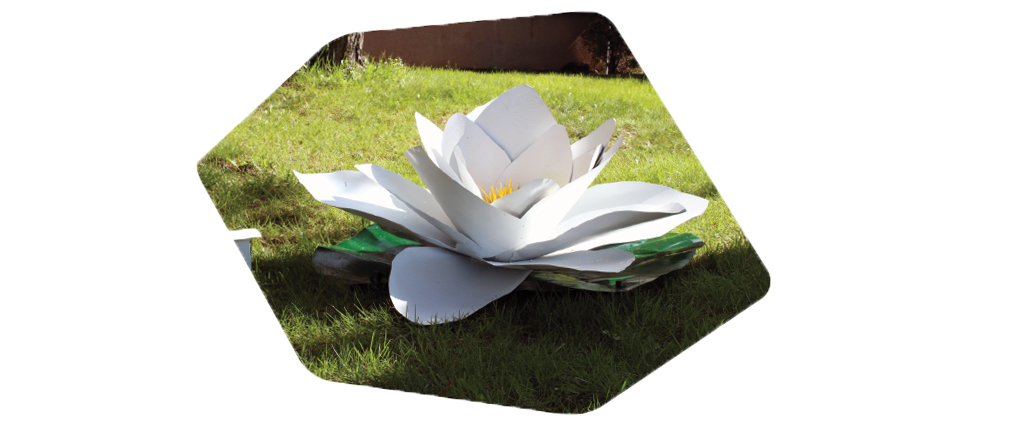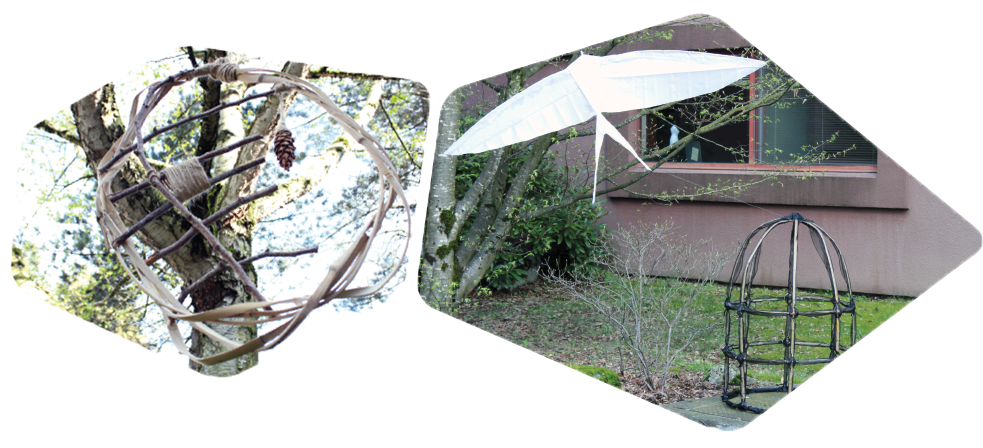By Nadine Moedt (The Cascade)
Photos by Megan Lambert (The Cascade)
Print edition: April 8, 2015 – Email
Visual arts students have decorated their way across campus with 22 exhibits of sculptural graffiti projects. The sculpture students worked under instructor Melanie Jones to execute public exhibits using bamboo as a way of learning about planning public art.
“Students were instructed to observe the campus and select a space that they would design an artwork specifically for — this is called ‘site-specific’ — thereby creating an artwork that is linked to the space it is in, taking into account weather, public use, and conceptual or historical details about the area or feature,” Jones explains.
While no theme was specifically directed, Jones says that the works find a common premise in ideas of nature / nurture and the use of weather to create sounds. Janver Castro explained that feeling the space before the creation of the piece and erection of the exhibit was crucial to the creative process.
“The context of your artwork and the space is important,” he said.
Sherlock Chen’s piece, for example, is titled “Words of the Wind,” and consists of four pipes.
“When the wind blows strong enough it will produce a sound … a song, and the song’s name is just called ‘words of the wind,’” Chen says. “Catching the function of the environment is very important.”
Alysha Klassen explained how the logistics of getting approval for a public piece complicated the creation.
“You had to worry about if your project was going to create a problem for the building, or get in the way of traffic,” says Klassen. Students had to write up a proposal and send it to Facilities for approval. Any requested changes had to be accommodated before the project continued. The effects of the piece on the natural environment also had to be considered, as Jocelyn Smith explained.
“It’s important to think about the impact the elements are going to have on the materials you’re using,” explains Smith. “Ones that were going into the water, for instance, had to be environmentally friendly.”
With files from Kodie Cherrille.





